new posts in all blogs
Viewing: Blog Posts Tagged with: Philadelphia, Most Recent at Top [Help]
Results 1 - 25 of 61
How to use this Page
You are viewing the most recent posts tagged with the words: Philadelphia in the JacketFlap blog reader. What is a tag? Think of a tag as a keyword or category label. Tags can both help you find posts on JacketFlap.com as well as provide an easy way for you to "remember" and classify posts for later recall. Try adding a tag yourself by clicking "Add a tag" below a post's header. Scroll down through the list of Recent Posts in the left column and click on a post title that sounds interesting. You can view all posts from a specific blog by clicking the Blog name in the right column, or you can click a 'More Posts from this Blog' link in any individual post.
Last Friday, as readers of this blog know, I took my father to the Academy of Music to see the fabulous musical "Once." Before we got there, we toured the birthplace of American liberty and sat within the spell of Maxfield Parish's "Dream Garden."
I write about that in today's
Philadelphia Inquirer.The link is
here.
Philadelphia long ago discovered the gem who is Nathaniel Popkin. He shows up at Emmy Award celebrations, on the jackets of wonderful novels and nonfiction collections, in the pages of
Philadelphia magazine, as book review editor at
Cleaver. He is, as well, a force behind Hidden City, and what I say here is the truth: few people know more about this city, or think about it more deeply, than Nathaniel Popkin.
So it was a distinct pleasure to be interviewed by him for
Hidden City. Our
conversation about walking, seeing, thinking, and believing (and Philadelphia) can be found here. I always learn from the questions he asks.
Thank you, Nathaniel.
We're
launching Love: A Philadelphia Affair at the Free Library tomorrow night on a stage that will sparkle with the warm wit and intelligence of broadcast pioneer Marciarose Shestack. We hope you'll join us.
One single man unites three cities, also the world. He wears white. He raises his hand. He stops his Fiat to kiss a young boy on a head, to touch a baby, to nod at an Argentine flag, to laugh at something, to mime a quick sprint. He speaks, at a mass, of St. Katherine. He honors educators and peacemakers. He talks about the power of being individually different together and about the devastations of attempting global sameness.
Celebrate your history.
Celebrate your culture.
Celebrate our many languages.
He celebrates the immigrant, reminds those who must be reminded that we, here in America, we, here, in Philadelphia, are all products of movement; my own Italian great-grandfather became a naturalized citizen not even 100 years ago. He asks us to look past walls and barriers. To be honest with each other. To seek out peace, to stop perpetuating damage, to hold together family and family life.
Money, fame, celebrity, awards, job titles: These things do not impress him. He prefers his own shoes, his own small apartment, his single suitcase of possessions.
We are watching him, learning from him, studying the skies (the morning hue here is the brightest pink). We are celebrating with those, like Sister Kimberly Miller, who have stood in his presence. We are praying for him today, another long day, and we will be praying for him, as his plane departs tonight, and then after, when he has more meetings to attend to, another continent to greet and to inspire.
Make the peace, he says. Or to keep it.
Be honest.
When I lived here the doors and shutters were red. A single room on the second floor was mine. Later, when I got married, I rented three full rooms on the floor above.
Camac Street. Philadelphia. Where I wrote bad poems, read at night, bought ice cream as an extravagance, waited for the phone to ring, but it hardly ever did. Where the big meal out was the Middle Eastern shop; I've still not tasted hummus like they made at that Middle Eastern shop. I met Precious near Camac, when I walked (in sneakers) Locust late at night. I went back and forth to my job until, at the age of twenty-five, I went into business for myself.
So that this place, which had red doors once, was where I waited to be married, then was. Where I had a job, then created one for myself. Where I stopped writing poetry so that I could write short stories. Where I returned after the surgery that wired my disintegrated jaw shut.
So much happened on Camac Street.
I walked by the other day. I remembered.
Philadelphia. I love her. I write about her. I celebrate her. But don't think that I can't see. This can be a hard-knock city. It doesn't always love you back.
Today I'm remembering a moment I will forever cherish.
Dangerous Neighbors, my Centennial novel, being featured as part of a First Book celebration. Mayor Nutter, standing beside me, signed my books for 120-plus young people who had never owned a book before.
I was honored.
I always am.
Not long ago, in Krakow, I discovered the living legacy of Pope John Paul II. I reflect on that, and on the anticipated arrival of Pope Francis to Philadelphia, in today's
Philadelphia Inquirer. The story can be found
here.With thanks, as always, to Kevin Ferris and the thoughtful design team at the
Inquirer. And with thanks to dear Karolina, whose impassioned stories about her childhood home, Krakow, led me across the waters to that beautiful city. And with thanks to Philadelphia, this city that I
love.

By:
[email protected],
on 2/27/2015
Blog:
Perpetually Adolescent
(
Login to Add to MyJacketFlap)
JacketFlap tags:
Duane Swierczynski,
Book Reviews - Fiction,
snitch,
confidential informant,
sarie holland,
Books,
book review,
Philadelphia,
CI,
canary,
Add a tag
It’s been awhile between drinks for a Duane Swierczynski novel but as always it has been worth the wait. Straight away its like jumping on a runaway train with that instant pleasure of having no idea where Duane Swierczynski is going to take you this time. After the brilliant insanity of the Charlie Hardie series […]

By: Shelf-employed,
on 2/20/2015
Blog:
Shelf-employed
(
Login to Add to MyJacketFlap)
JacketFlap tags:
harmonicas,
YA,
music,
fairy tale,
book review,
historical fiction,
favorites,
California,
J,
Philadelphia,
orphans,
immigrants,
magical realism,
Nazi Germany,
piano,
Advance Reader Copy,
Add a tag
 If this is how the year is starting out, it's going to be a banner year for middle-grade books. First, Gordon Korman's Masterminds (more on that fantastic new thriller another day) and now Echo: A Novel.
If this is how the year is starting out, it's going to be a banner year for middle-grade books. First, Gordon Korman's Masterminds (more on that fantastic new thriller another day) and now Echo: A Novel.
Ryan, Pam Muñoz. 2015. Echo: A Novel. New York: Scholastic.
I received an Advance Reader Copy of Echo from Scholastic and was intrigued that it was wrapped in musical notation paper and had a smartly-boxed Hohner Blues Band harmonica tied to it.
I was happy to see an apparently music-related book, and what somewhat surprised to find that Echo begins with a fairytale, "The Thirteenth Harmonica of Otto Messenger," a fairytale replete with abandoned princesses, a magical forest, a mean-spirited witch, and a prophecy,
"Your fate is not yet sealed. Even in the darkest night, a star will shine, a bell will chime, a path will be revealed."
Though brief, I became enthralled with the tale and was surprised and taken aback when I reached Part One and found myself not in the fairytale forest, but in
Trossingen, Baden-Württemberg, Germany, 1933, home to the
world's oldest harmonica manufacturer. I couldn't wait to find out what became of the abandoned princesses, but soon found myself wrapped up in the story of young Friedrich Schmidt, a German Jew during Hitler's ascendance to power. This kind-hearted, young boy of a musical family was surely destined to be gathered up in the anti-Semitic wave sweeping through Germany. I became engrossed in Friedrich's story, anxiously hoping that things would work out for him and his family, and was again surprised when I reached Part Two and found myself in
Philadelphia, 1935, home of the then-famous
Albert Hoxie and the Philadelphia Harmonica Band, and of the Bishop's Home for Friendless and Destitute Children, where I found myself in the company of piano-playing orphans, Mike and Frankie Flannery. Their story was no less heart-wrenching than Friedrich's, and I found myself desperately rooting for the young boys when I suddenly arrived
in a migrant worker's community in Southern California, 1942, where young Ivy Maria Lopez was about to play her harmonica on the Colgate Family Hour radio show, but her excitement was short-lived. I fell in with this hard-working, American family and hoped, along with Ivy, for her brother's safe return from the war.
Of course, there's more, but this is where I will leave off.
Pam Muñoz Ryan has written a positively masterful story that will take the reader from the realm of magic through the historical travails of the infirm, the oppressed, and the poor in the midst of the 20th century. Through it all, music gathers the stories together in a symphony of hope and possibility. In music, and in
Echo, there is a magic that will fill your soul.
It may only be February, but I predict that praise for
Echo will continue throughout the year.
On a library shelf near you - February 24, 2015.

I walked the new Schuylkill Banks Boardwalk before my river talk last evening. The skies were expressive, pewter and blue, and from this 15-foot-wide float of walkway over the river herself, I saw the city as I had not seen her before. One of the many exhilarating advantages of this new and elevating space.
Another advantage? The joy of it. The Philadelphians who are coming to know, and to better see, their river. The sense that they don't take this for granted, and why should they? It wasn't all that long ago that the Schuylkill was sludge and noxious fumes, dead water, a place to be hurried past. Now, thanks to the
Schuylkill River Development Corporation, Fairmount Water Works, Schuylkill River Heritage Area, the William Penn Foundation, the people I have met this week at the 2014 Pennsylvania River of the Year events, and many others, the Schuylkill is the place to be.
I've written here about the Heritage Area. I've written here about Fairmount Water Works. Today, my spotlight is on the SRDC.
Already offering kayaking and river tours, skateboard parks and overlooks, this brand-new boardwalk, and the idea of the bucolic in an urbanscape, the SRDC is hardly done with its quest to build "trails and greenway running along both banks of the Schuylkill River wherever possible between the Fairmount Dam and the Delaware River." Now planned or in play are the Bartram's Mile, destined to run along the west bank between Grays Ferry Avenue and 58th Street (and one-day connecting to the Grays Ferry Crescent by an abandoned railroad bridge); a pedestrian/biking west bank trail; and an east-side trail between the South Street Bridge and Christian.
All I know is words. The SRDC, the organizations mentioned above, the river advocates who work on behalf of tributaries, against run-off, for the future—they are the ones making the physical, even quantifiable difference to our city.
Find a way to thank them the next time you head off toward the river. You wouldn't be there without them.

By: Alice,
on 8/8/2014
Blog:
OUPblog
(
Login to Add to MyJacketFlap)
JacketFlap tags:
Abigail Perkiss,
historical memory,
Mount Airy integration project,
racial integration,
West Mount Airy,
West Mount Airy Neighbors,
airy,
History,
Journals,
q&a,
America,
Philadelphia,
social change,
Oral History,
*Featured,
oxford journals,
Oral History Review,
Caitlin Tyler-Richards,
OHR,
Add a tag
By Caitlin Tyler-Richards
There are many exciting things coming down the Oral History Review pipeline, including OHR volume 41, issue 2, the Oral History Association annual meeting, and a new staff member. But before we get to all of that, I want to take one last opportunity to celebrate OHR volume 41, issue 1 — specifically, Abigail Perkiss’ “Reclaiming the Past: Oral History and the Legacy of Integration in West Mount Airy, Philadelphia.” In this article, Abigail investigates an oral history project launched in her hometown in the 1990s, which sought to resolve contemporary tensions by collecting stories about the area’s experience with racial integration in the 1950s. Through this intriguing local history, Abigail digs into the connection between oral history, historical memory, and social change.
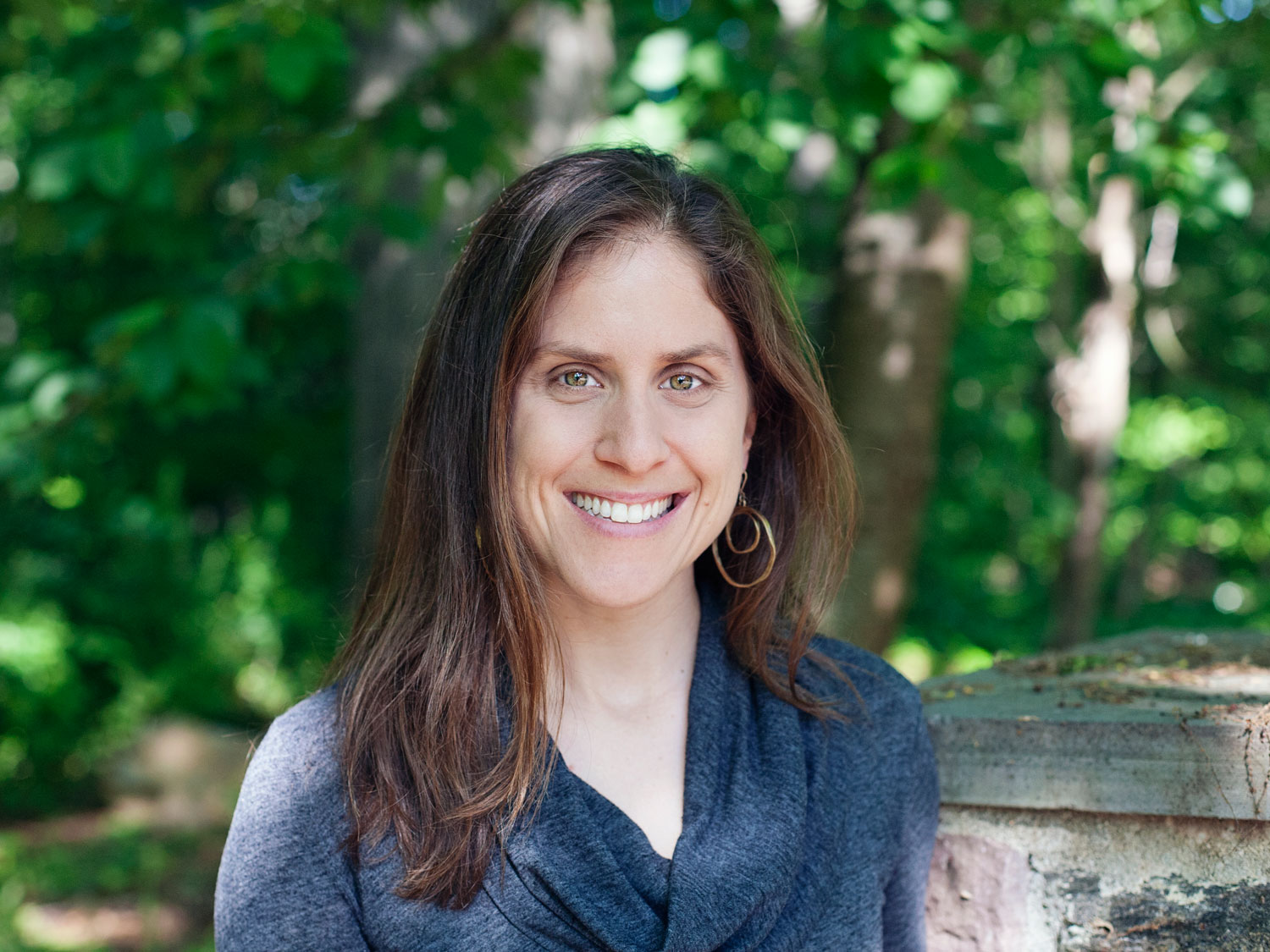
Abigail Perkiss. Photo credit: Laurel Harrish Photography
If that weren’t enough to whet your academic appetite, the article also went live the same week her first daughter, Zoe, was born.

How awesome is that?
But back to business. Earlier this month I chatted with Abigail about the article and the many other projects she has had in the works this year. So, please enjoy this quick interview and her article, which is currently available to all.
How did you become interested in oral history?
I’ve been gathering people’s stories in informal ways for as long as I can remember, and as an undergraduate sociology major at Bryn Mawr College, my interests began to coalesce around the intersection of storytelling and social change. I took classes in ethnography, worked as a PA on a few documentary projects, and interned at a documentary theater company. All throughout, I had the opportunity to develop and hone my skills as an interviewer.
I began taking history classes my junior year, and through that I started to think about the idea of oral history in a more intentional way. I focused my research around oral history, which culminated in my senior thesis, in which I interviewed several folksingers to examine the role of protest music in creating a collective memory of the Vietnam War, and how that memory was impacting the way Americans understood the war in Iraq. A flawed project, but pretty amazing to speak with people like Pete Seeger, Janis Ian, and Mary Travers!
After college, I studied at the Salt Institute for Documentary Studies in Portland, Maine, and when I began my doctoral studies at Temple University, I knew that I wanted to pursue research that would allow me to use oral history as one of the primary methodological approaches.
What sparked your interest in the Mount Airy project?
When I started my graduate work at Temple, I was pursuing a joint JD/PhD in US history. I knew I wanted to do something in the fields of urban history and racial justice, and I kept coming back to the Mount Airy integration project. I actually grew up in West Mount Airy, and even as a kid, I was very much aware of the lore of the neighborhood integration project. There was a real sense that the community was unique, special.
I knew that there had to be more to the utopian vision that was so pervasive in public conversations about the neighborhood, and I realized that by contextualizing the community’s efforts within the broader history of racial justice and urban space in the mid-twentieth century, I would be able to look critically about the concept and process of interracial living. I could also use oral history as a key piece of my research.
Your article focuses on an 1990s oral history project led by a local organization, the West Mount Airy Neighbors. Why did you choose to augment the interviews they collected with your own?
The 1993 oral history project was a wonderful resource for my book project (from which this article comes); but for my purposes, it was also incomplete. Interviewers focused largely on the early years of integration, so I wasn’t able to get much of a sense of the historical evolution of the efforts. The questions were also framed according to a very particular set of goals that project coordinators sought to achieve — as I argue, they hoped to galvanize community cohesion in the 1990s and to situate the local community organization at the center of contemporary change.
So, while the interviews were quite telling about the West Mount Airy Neighbors’ efforts to maintain institutional control in the neighborhood, they weren’t always useful for me in getting at some of the other questions I was trying to answer: about the meaning of integration for various groups in the community, about the racial politics that emerged, about the perception of Mount Airy in the city at large. To get at those questions, it was important for me to conduct additional interviews.
Is there anything you couldn’t address in the article that you’d like to share here?
As I alluded to above, it is part of a larger book project on postwar residential integration, Making Good Neighbors: Civil Rights, Liberalism, and Integration in Postwar Philadelphia (Cornell University Press, 2014). There, I look at the broader process of integrating and the challenges that emerged as the integration efforts coalesced and evolved over the decades. Much of the research for the book came from archival collections, but the oral histories from the 1990s, and the ones I collected, were instrumental in fleshing out the story and humanizing what could otherwise have been a rather institutional history of the West Mount Airy Neighbors organization.
Are you working on any projects the OHR community should know about?
I’ve spent the past 18 months directing an oral history project on Hurricane Sandy, Staring out to Sea, which came about through a collaboration with Oral History in the Mid-Atlantic Region (remember them?) and a seminar I taught in Spring 2013. That semester, I worked intensively with six undergraduates, studying the practice of oral history and setting up the project’s parameters. The students developed the themes and questions, recruited participants, conducted and transcribed interviews. They then processed and analyzed their findings, looking specifically at issues of race, power and representation in the wake of the storm.
In addition to blogging about their experience, the students presented their work at the 2013 OHMAR and OHA meetings. You can read a bit more about that and the project in Perspectives on History. This fall, I’ll be working with Professor Dan Royles and his digital humanities students to index the interviews we’ve collected and develop an online digital library for the project. I’ll also be attending to the OHA annual meeting this year to discuss the project’s transformative impact on the students themselves.
Excellent! I look forward to seeing you (and the rest of our readers) in Madison this October.
Caitlin Tyler-Richards is the editorial/media assistant at the Oral History Review. When not sharing profound witticisms at @OralHistReview, Caitlin pursues a PhD in African History at the University of Wisconsin-Madison. Her research revolves around the intersection of West African history, literature and identity construction, as well as a fledgling interest in digital humanities. Before coming to Madison, Caitlin worked for the Lannan Center for Poetics and Social Practice at Georgetown University.
The Oral History Review, published by the Oral History Association, is the U.S. journal of record for the theory and practice of oral history. Its primary mission is to explore the nature and significance of oral history and advance understanding of the field among scholars, educators, practitioners, and the general public. Follow them on Twitter at @oralhistreview, like them on Facebook, add them to your circles on Google Plus, follow them on Tumblr, listen to them on Soundcloud, or follow their latest OUPblog posts via email or RSS to preview, learn, connect, discover, and study oral history.
Subscribe to the OUPblog via email or RSS.
Subscribe to only history articles on the OUPblog via email or RSS.
The post Oral history, historical memory, and social change in West Mount Airy appeared first on OUPblog.

My love affair with Philadelphia began long before I settled on the University of Pennsylvania as my undergraduate home. I was my mother's daughter, already convinced. I believed in that city.
As a student at Penn, I left the campus alone, prowled the streets of West Philadelphia, wrote poems upon my return. As a new graduate I took a job as a marketing coordinator for an architecture firm, where I, in part, researched and wrote history-rich installation placards for projects at Penn's Landing and elsewhere.
But it wasn't until I was selected, in the mid-1980s, by the team at Center City District to write a series of "permanent" installations about Philadelphia's history that I felt fully fledged and entrenched as a Philly girl. Those permanent installations, created with the graphic designer Lynda Cloud Weber, hung block by block, east by west on Walnut Street until they were not visible any longer.
The permanent installations had disappeared permanently.
Yesterday, however, while researching a series of new stories for the
Philadelphia Inquirer, I discovered one of the long-lost panels—came upon it quite unexpectedly. It was as if a story I'd written had been lost and then returned to me. I waited to be alone with the panel. Read it while no one was watching. Shook my head.
I haven't changed much, all these years later. Not in what I write about, nor in how I write it.
For good and for bad, I am still me.
Extraordinary weather. The sun alive.
Here is Philadelphia, toward the end of one recent day. The sky splitting. A million glass panes holding a mirror up to the atmosphere.
My YA writing friends — not only is this an incredibly inventive development (a craft press publishing YA chapbooks for area students)—but this spells opportunity, for you.
The press release from The Head & The Hand Press follows. I'm stoked to be part of the process and program, happy to be traveling to the Science Leadership Academy on May 12 on behalf of this initiative. But I'm equally stoked to share this publishing opportunity (I'm look at you!) here.We at The Head & The Hand Press <http://www.theheadandthehand.com/> , a craft publisher based in Fishtown, are so excited to collaborate with the students and teachers at the Science Leadership Academy <http://www.scienceleadership.org/> on our latest project, the 4th Floor Chapbook Series <http://www.theheadandthehand.com/4th-floor-chapbook-series/> . We've been vending chapbooks for the general population to great acclaim <http://www.philly.com/philly/blogs/inq-blinq/Philly-coffee-shop-is-vending-verse.html> in Philly establishments like Elixr coffee house and Honeygrow in a custom-built countertop vending machine, but now it's time to swap out snacks for YA lit and poetry in a new vending machine to be installed at the SLA high school in Center City this fall. To celebrate this partnership, YA author Beth Kephart <http://beth-kephart.blogspot.com/p/we-could-be-heroes-berlin-novel.html> has graciously agreed to do a reading of her recent novel Going Over, a love story set in Berlin before the wall is torn down, at the high school. A bit more about the book and Beth are below. The reading will take place on Monday, May 12 at 11:40 a.m. at the Science Leadership Academy at 55 N. 22nd St.
About Going Over:
It is February 1983, and Berlin is a divided city—a miles-long barricade separating east from west. But the city isn’t the only thing that is divided. Ada, almost 16, lives with her mother and grandmother among the rebels, punkers, and immigrants of Kreuzberg, just west of the wall. Stefan, 18, lives east with his brooding grandmother in a faceless apartment bunker of Friedrichshain, his telescope pointed toward freedom. Bound by love and separated by circumstance, their only chance lies in a high-risk escape. But will Stefan find the courage to leap? Will Ada keep waiting for the boy she has only seen four times a year ever since she can remember? Or will forces beyond their control stand in their way?
Told in the alternating voices of the pink-haired graffiti artist and the boy she loves, Going Over is a story of daring and sacrifice, choices and consequences, and love that will not wait.
Click <http://beth-kephart.blogspot.com/p/we-could-be-heroes-berlin-novel.html> for downloads, trailers, interviews and guest blog posts
Beth Kephart is the award-winning author of eighteen books, an adjunct professor of creative nonfiction at the University of Pennsylvania, a frequent contributor to the Chicago Tribune and Philadelphia Inquirer, and the strategic writing partner in a boutique marketing communications firm. Handling the Truth: On the Writing of Memoir won the 2013 Books for a Better Life Award (Motivational Category). Nests. Flight. Sky., Kephart’s first memoir in years, was recently published by Shebooks. Most recently, Beth’s ninth young adult novel, Going Over (Chronicle Books), a 1983 Berlin story and a Junior Library Guild Selection, was launched to three starred reviews.

By: AlyssaB,
on 3/15/2014
Blog:
OUPblog
(
Login to Add to MyJacketFlap)
JacketFlap tags:
*Featured,
germantown,
avenue,
congregations,
faith on the avenue,
international women's month,
katie day,
religion on a city street,
women in leadership,
hagar,
sandberg,
hurleyite,
sheryl,
Books,
women,
Religion,
women's history month,
pastor,
Philadelphia,
leadership,
pastors,
Humanities,
religion in america,
Add a tag
By Katie Day
I am one of the last professional women I know to read Lean In by Facebook COO Sheryl Sandberg (Knopf, 2013). If you are also among the laggards, it is an inspiring call to women to lean into leadership. Too often, Sandberg shows through research and life story, women are not considered “leadership material,” and not just by men. We also send that message to ourselves, and attribute any success to external factors such as luck and the support of others. We just don’t think we have the right stuff to be leaders.
Too bad Sheryl Sandberg has not been to Germantown Avenue in Philadelphia. After studying the communities of faith along that one street—around 88 congregations, the number fluctuating year to year—I found one thing that stumped me. There are a whole lot more women in leadership in these houses of worship than in any national sample of clergy. The most generous research findings reflect 10-20% of congregations to be headed by women in the United States today. In my sample, 44% of communities of faith have female leadership. This phenomenon is true across the religious spectrum. “Prestigious pulpits” in the historic Mainline Protestant churches are disproportionately occupied by women. But so were the pulpits in small independent African-American churches. Two of the three mega-churches had women as co-pastors. In the third, the associate pastor is a woman and considered the heir-apparent for the senior position. Two of the three peace churches had women leaders. There are no longer Catholic churches on the Avenue (which don’t have women priests), and the two mosques I researched were led exclusively by men. But the small Black spiritualist Hurleyite congregation (Universal Hagar) has a woman as pastor.

Universal Hagar Church, a Hurleyite congregation, is located across the street from Fair Hill Burial Ground. Photo by Edd Conboy. Used with permission.
How can we account for this? It might have something to do with Philadelphia’s cultural history of inclusivity, providing a context in which women broke through the stained glass ceiling in the AMEZ and Episcopal traditions. Perhaps it is more closely related with the Great Migration North, in which women sought out church anchors in neighborhoods in which to settle. Frankly, I am hoping a researcher will figure this out…and bottle it!
More impressive to me than the numbers are the amazing women I interviewed. Women like Pastor Jackie Morrow, who started a church and a school in a row house, and ministers to everyone in her corner of Northwest Philly, from the young men who play basketball in her parking lot to the mentally challenged woman who regularly stops by for prayer, food, and a hug. Or Rev. Melanie DeBouse, who pastors in the poorest neighborhood in the city and is teaching young children to “kiss your brain” and older men how to read. Or Rev. Cindy Jarvis, senior pastor at the Presbyterian Church of Chestnut Hill, where she oversees a budget of over a million dollars and has underwritten efforts to prevent gun violence, provide health care for the poor, and a vibrant social and educational program for seniors. These women, and others on the Avenue, are leaning in to take leadership roles not in corporations but in the trenches of gnarly urban problems.
Make no mistake: I like Sandberg’s book. But the clergy women of Germantown Avenue are leaning into stronger headwinds with impressive competence and confidence. They inspired me more.
Katie Day is the Charles A. Schieren Professor of Church and Society at the Lutheran Theological Seminary at Philadelphia. She is the author of Faith on the Avenue: Religion on a City Street and three other books and numerous articles that look at how religion impacts a variety of social realities.
Subscribe to the OUPblog via email or RSS.
Subscribe to only religion articles on the OUPblog via email or RSS.
The post Leaning in appeared first on OUPblog.

.jpeg?picon=2593)
By: Chuck Dillon,
on 7/16/2013
Blog:
blog 30 x 30 - Chuck Dillon's blog.
(
Login to Add to MyJacketFlap)
JacketFlap tags:
Penguins,
city,
Highlights,
Philadelphia,
Highlights for Children,
Farmers Market,
Sea Horse,
what's wrong?,
city market,
Italian market,
Add a tag
When
Highlights asked me to make a What's Wrong? of a City Market I could think of no other than
Philadelphia's Italian Market. I've only been there once in my life, during the off peak time, but I did a lot of research (see below) to make it look authentic minus the trash and fire barrels. If you've ever been to the Italian Market in South Philadelphia,
or saw the scene in Rocky when he is jogging through it (starts at :23) one thing comes to mind, "this is so beautiful and yet, totally disgusting." Honestly, it smells, there's trash all over the place, and most of the merchants are rude. Ah, Philadelphia! City of Brotherly Love. That's what makes this city so great- everyone wears their hearts on their sleeve and we don't apologize for it or care if you're offended- much like you would speak to a close family member. Ha!
I finished this piece the week my Dad went into the hospital before he passed away. Good friend and designer,
Drew Phillips, helped me out with doing some flat coloring for me. All I had to do was make some adjustments, then add textures and shadows. Thanks, Drew!
Things to look for in this piece: Adrian Balboa ironing a sock, myself, wife and daughter driving a row home, and my personal favorite, a girl mouse being serenaded with her concerned Father reacting in a nearby window.
The original sketch is below. One thing I was sad to see go was Adrian Balboa carrying Rocky's two turtles known as Cuff and Link.
The scene was based loosely on these photos:
I made this in honor of my Dad for Father's Day back in 1994. At the time I had a weekly comic strip in the Philadelphia Daily News. I gave this as a gift to my Dad the following Father's Day. He had it hanging in his house for many years. Forgive the quality of the scan, I did my best to clean it up.
waiting at the edge of the platform
for the train home.
I'm drawing Philadelphia's Italian market which is terribly fun to do.
Philadelphia this September is Florentine light and half moons. It is the old Drake and the new performing arts hall. It is walking beside my son (taller now, even more handsome), who tells stories of new friends and old, four concurrent office projects, a place called Whisper, laundry rooms.
I didn't live as fully as my son now lives when I was his age. I didn't know half as much, didn't have nearly the number of friends, didn't see the future as clearly as he sees his future. He has a greater talent for joy, a larger embrace of life, a more intelligent reading of other people and their intentions, a greater forgiveness of those who get things wrong. He has more, and he has earned more. He is more complete.
Which in the end (and of course) completes me.
I'm currently collaborating with author Brion J. Shreffler on a non-fiction travel/food blog called,
"I'm Only Conscious of the Rush." The illustrations are way out of my norm in their looseness and painterly style so it is pretty fun for me. I hope you'll
join Brion on his adventure to the
South by Southwest (SXSW) Music Festival in Austin. A more detailed description is below.
In Brion's words:
"Based on my trip to Austin,TX for
SXSW back in March, 'I'm conscious only of the rush' is an adventure story that blends together food & music narrative journalism.
Featuring illustrations by Philly artist Chuck Dillon, the project is ongoing, with me soon to return to Austin for an epilogue. I also plan to revisit several other cities along the route I took from Philadelphia, in addition to visiting new cities in order to catch up with musicians and artists I came into contact with at
SXSW. The thing that keeps Austin weird (a self-applied badge of honor) is the same DIY mentality that turns a little Texas town into the center of the music universe for 1 week in March. Bands from Berlin, London, Tokyo, Portland, Sao Paolo, NYC, and Brisbane descend on Austin along with music fans the world over. It.is.[cussing].nuts. But the DIY mentality isn't just for music--it permeates Austin culture, with a robust food truck scene and entrepreneurial spirit (everything from designer t-shirts + clothing, craft goods, metal works, bicycles, and more) that's evident on every street thankfully devoid of a national chain presence (only in Austin will you find a shop that is a bike repair/dealer, coffee shop, and art dealer all in one). In a sense then,
SXSW is an argument for culture, a statement about what America should be, about the beauty of art, of what we can make our world when we create--music, food, business, etc--rather than follow."

By:
Beth Kephart ,
on 9/5/2012
Blog:
Beth Kephart Books
(
Login to Add to MyJacketFlap)
JacketFlap tags:
Small Damages,
Handling the Truth,
James Martin,
Cynthia Kaplan,
Ryan Richards,
Bruce Springsteen,
Philadelphia,
Philomel,
John Prendergast,
Buzz Bissinger,
Kelly Writers House,
Mainline Media News,
Add a tag
Late yesterday afternoon, I took a quick dance lesson then hurried to the train to see my kid, city side. I have been down there untold times of late—checking out apartments, moving boxes in, arriving, breathless, to help with something, and of course, this young man (
not a kid) needs no help at all. I'm just drumming up excuses to spend an hour here or there with him.
So that I have seen the city under sun and the city swollen with rain, the city just after dawn, the city late at night. And I have felt more energized and alive than I have felt for a long time. Philadelphia does that to me. And so do snatches of conversation with my guy.
This morning a text comes in, six a.m.ish.
I'm working on my story, it said. Because my son shares this with me, this love of words. This pleasure taken in filling the silent hours with vivid fictions. By now, he's off to work, first day. And my happiness for him is giant.
Meanwhile, Ryan Richards of Main Line Media News interviewed me yesterday morning at 8:15 a.m. (not-ish) and, 13 hours later, this
Springsteen-infused story (which is also about the making of
Small Damages for Philomel) had been posted. Tuesday is day-before-pub day there at Main Line Media News and Ryan plays a central role in getting all stories out and prettied up for show. I have no idea, therefore, how he wrote such a nice story in the midst of all that, but I thank him. I hope he got some sleep last night.
Finally, tucked into the day was this formal announcement from Penn about the Homecoming Weekend Panel I'll be sharing with my friends Buzz Bissinger, John Prendergast, and Cynthia Kaplan, as well as James Martin, whom I am eager to meet. Join us if you can.
October 27, 2012/Saturday 4:30 PM - 6:30 PM
Memoir: Methods and Meanings
Kelly Writers House
Arts Cafe
3805 Locust Walk
Join alumni authors at Kelly Writers House as they read from and talk about their work in memoir. Panelists include Pulitzer Prize-winner Buzz Bissinger C'76, whose latest book is Father's Day: A Journey Into the Mind and Heart of My Extraordinary Son; essayist and performer Cynthia Kaplan C'85, whose 'true stories' are collected in Why I'm Like This and Leave the Building Quickly; Beth Kephart C'82, author of multiple memoirs and young-adult novels, and of the forthcoming Handling the Truth; and James Martin W'82, author of In Good Company, which tells the story of his conversion from GE executive to Jesuit priest, and eight other books. Pennsylvania Gazette Editor John Prendergast C'80 will moderate the discussion. Advance registration is not required, but seating is limited. RSVP to [email protected] or call (215) 746-POEM.
I call Philadelphia "my" city, but it does not, of course, belong to me; nothing is ever for keeps. But I did grow up visiting my mother's mother and father in southwest Philly, and I went to Penn across the river, and I lived first in the Art Museum area, then on Camac (two different apartments) and next on Gaskill, and I've returned, repeatedly, to take photographs, to collect stories, to teach. If any city were, for a moment, mine, it would be this one.
But now this place I love will also belong to my son, as he moves into
a new job and apartment among the gridded streets. Last night, perhaps the nicest night Philadelphia has seen all summer long, we took him to
a special dinner. I, being my perhaps overly enthusiastic self, suggested a before-dinner stroll down near Delancey, where much of
Dangerous Neighbors takes place, before working back toward Rittenhouse Square and east.
I caught the moment with my tiny Canon.
Got to spend a fabulous few hours at one of my favorite museums -
It is housed in a re-purposed old mill, along the lovely
Brandywine 'Creek' (or Christiana River) -
The grounds are beautiful - full of wild flowers, and sculpture. :-) We have pictures of us sitting on this cow dating from the early 80's. :-)
oh - and wild life! :-)
My very generous chauffeurs and fellow-museum-perusers for the day -
Dominick Saponaro and
Christina Hess (continuing the picture-taking-on-the-statuary tradition. :-)
Besides the always fun art-viewings (which we are not allowed to photograph), there is the stunning views from the various windows -
Driving about around fields and wooded areas is one of my favorite things to do when back east...
The flora and fauna are significantly different than here in the PNW...
as are the stone walls -
- and covered bridges...
(not a fir tree in sight!)
I love the old farms - a thing we are short on the closer you get to Seattle.... We are also sadly short of fireflies!
I don't miss the humidity though. At all. I can only bear it for short visits. Lovely short visits....
View Next 25 Posts




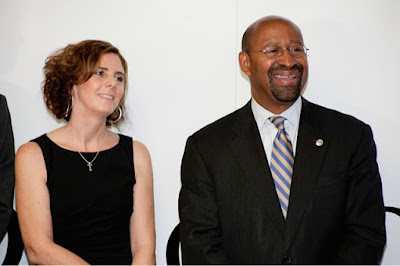

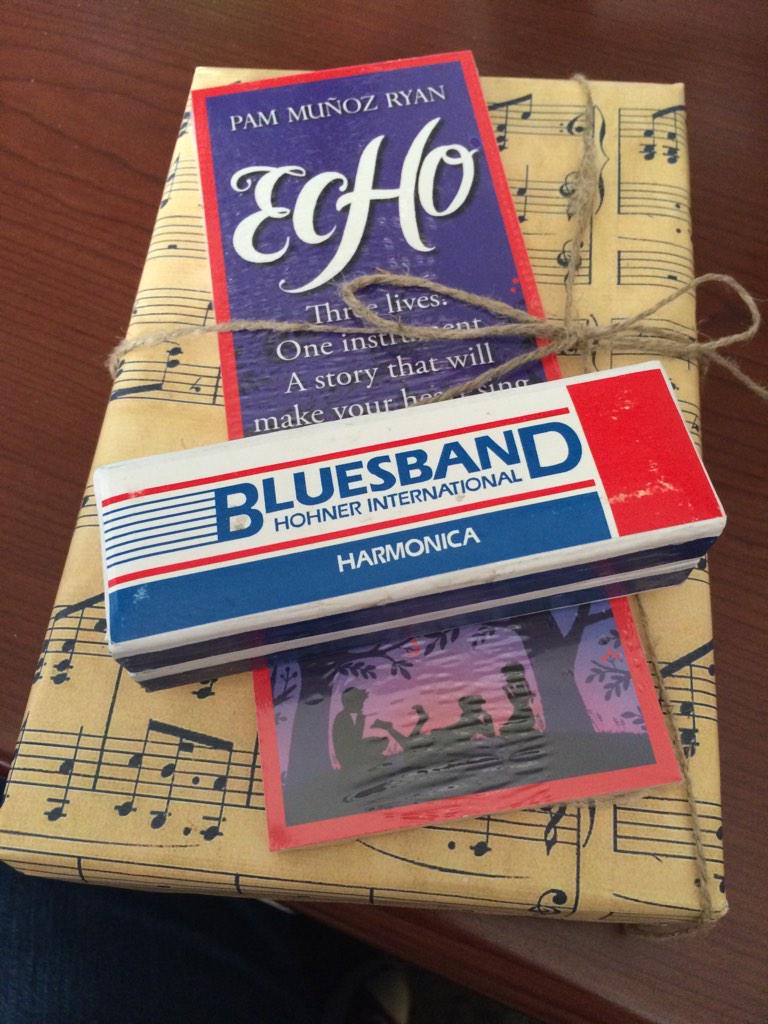










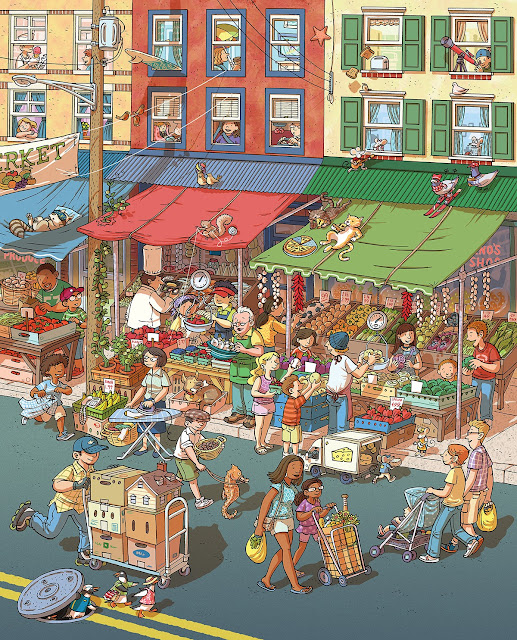

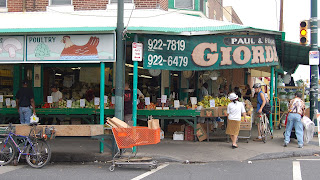


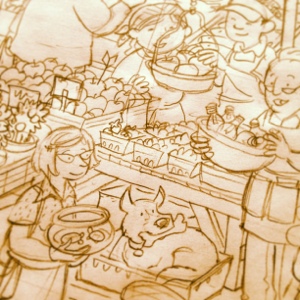



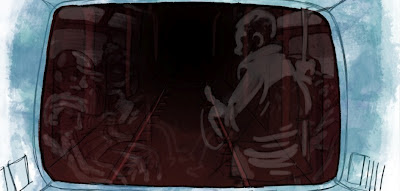








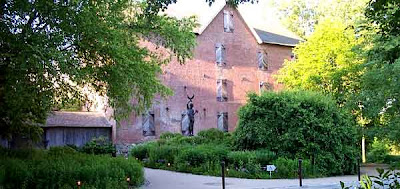



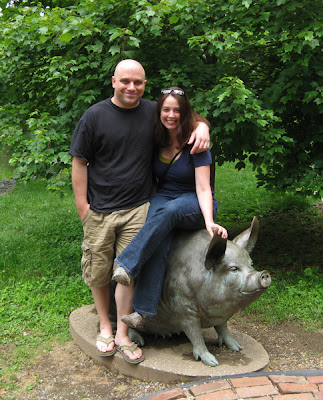
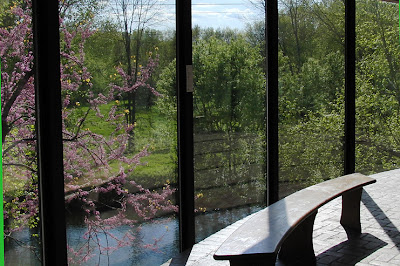





Wonderful...I hope that you enjoy this time with him and have a great time in Florence!
How you say the things you say! (Great pics!!)
Misting over. Sharing your joy. xo